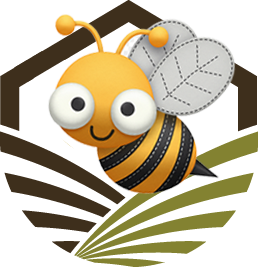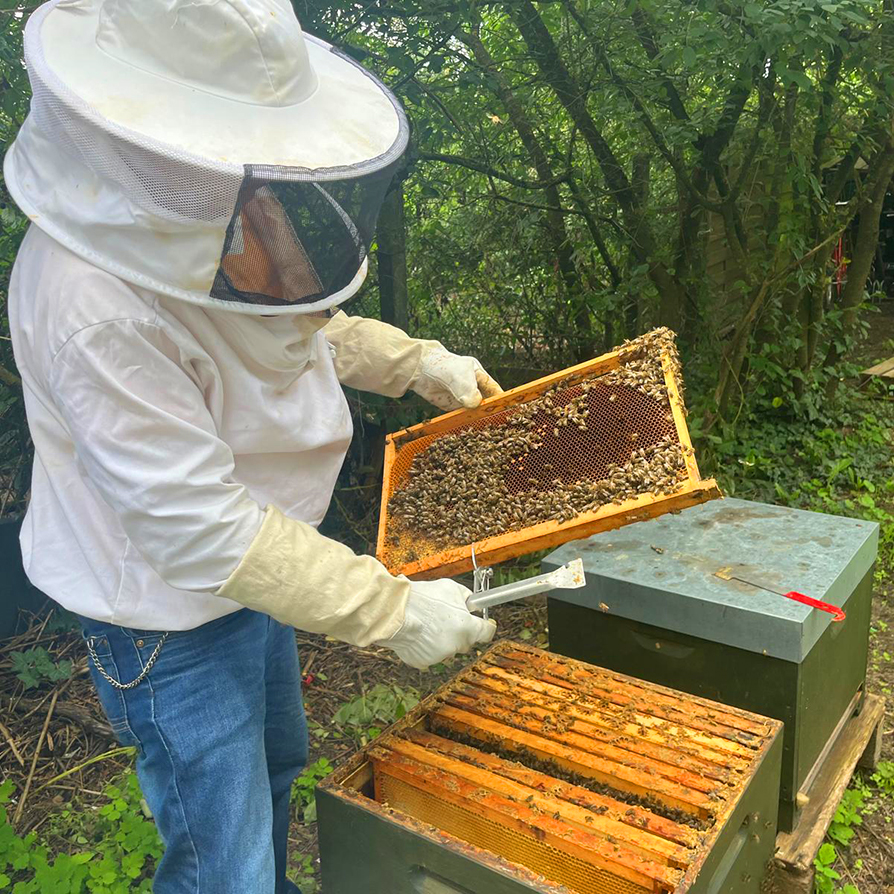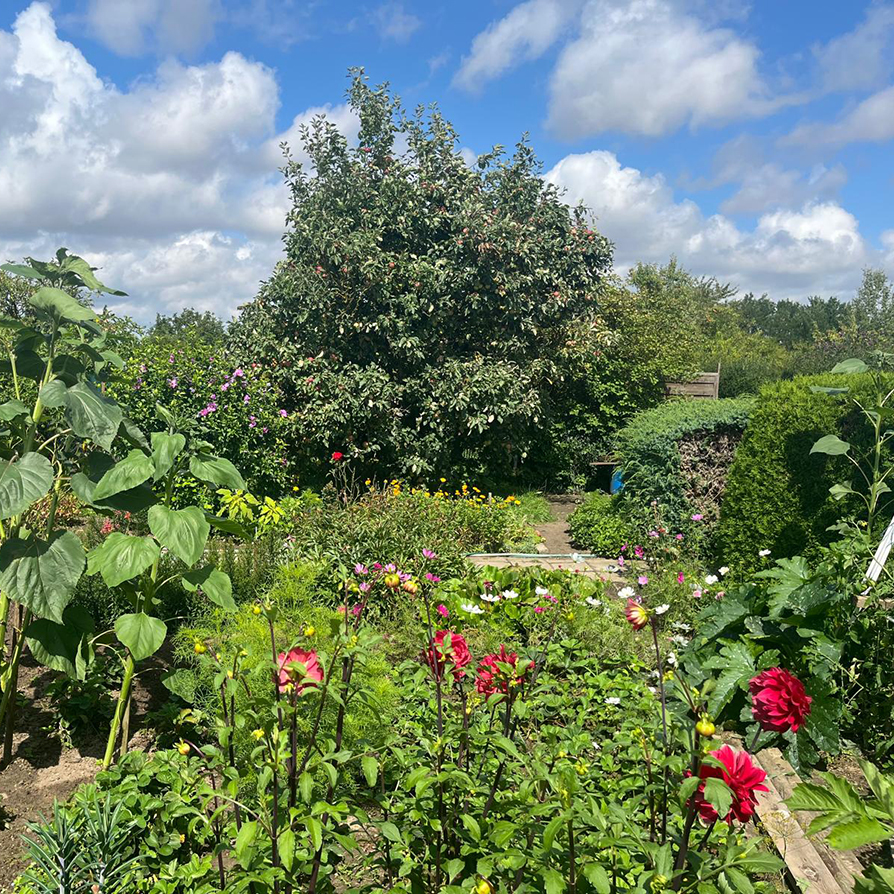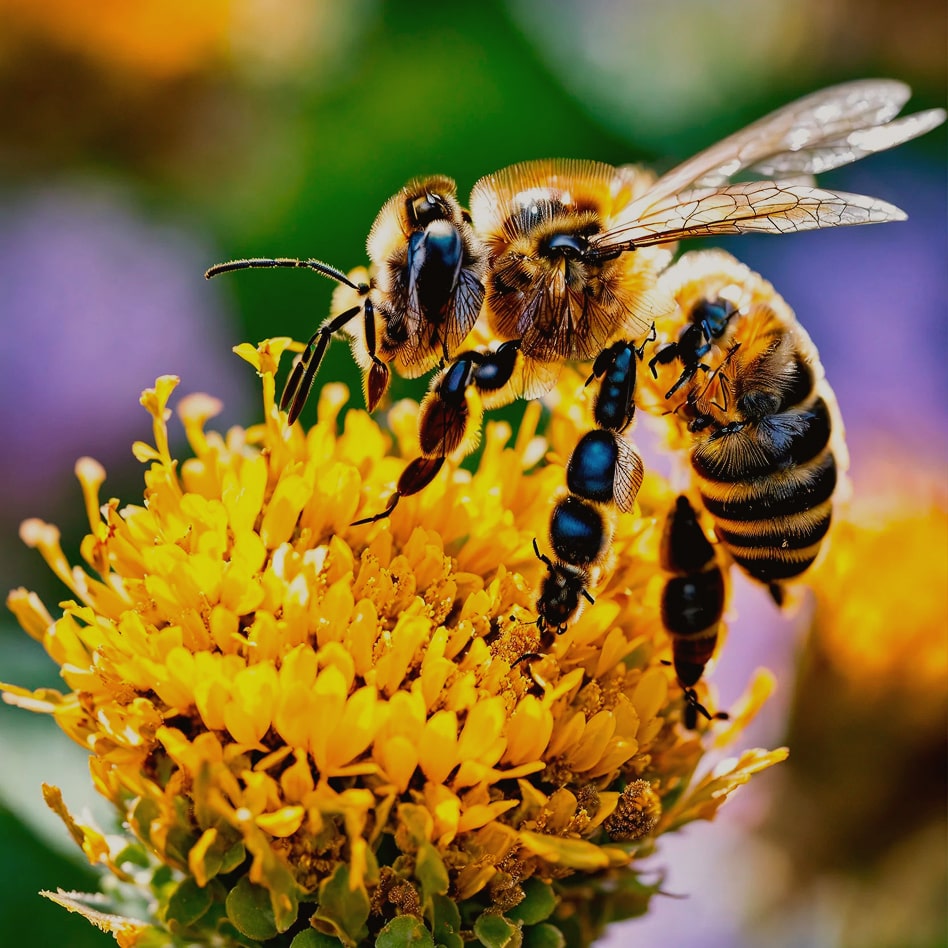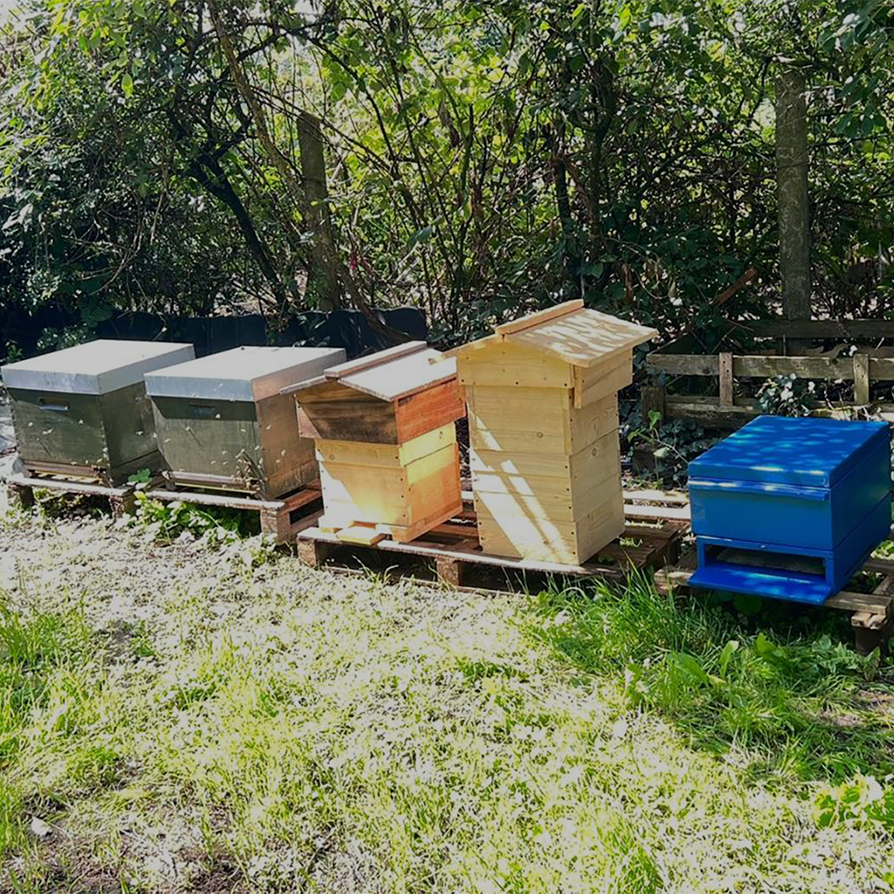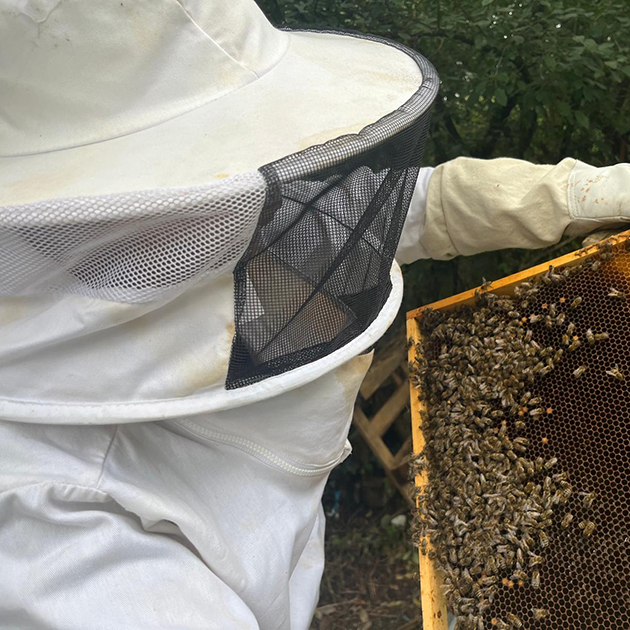SUSTAINABLE FARMING METHODS
We apply methods such as integrated pest management to reduce chemical use, breeding bees adapted to the local environment, rotating and diversifying honey crops to ensure year-round food, installing hives in areas with good plant cover, using harvesting techniques that don’t stress the bees, and protecting clean water sources to maintain colony health.
Planting native honey plants
We plant native honey plants around the farm to ensure a diverse and seasonal food supply for the bees.
No use of chemicals
We do not use chemicals to protect the health of bees, avoid toxic residues in honey and wax, preserve the biodiversity of the environment, and maintain the natural balance of the hive, thus promoting the natural resilience of the colonies and the pure quality of bee products.
We work with accredited partners
This allows us to access up-to-date scientific knowledge, implement evidence-based practices, improve hive health and productivity, and develop sustainable innovations that increase the quality of bee products and ecosystem resilience.
Beekeeping practices
Periodic inspection of hives
We inspect the interior of the hive periodically (every 7-15 days, depending on the season). This allows us to detect problems such as disease, parasites, queenlessness, or food shortages. This allows us to make quick decisions to maintain the health and productivity of the hive.
This helps with the early detection of diseases and parasites, as well as diseases such as American foulbrood, nosema, or varroa, which can spread rapidly if not detected early. We review the frames and observe the brood to identify abnormal signs such as dead larvae, missing brood, or deformities in the bees.
Natural nutrition through honey flora
We place hives near areas with abundant flowers that produce nectar and pollen, such as lavender, rosemary, sunflowers, clover, almond trees, and others. This provides a balanced and natural diet and improves the quality of honey and other bee products.
Artificial or supplemental nutrition
Helps keep the hive strong in winter or during droughts. Stimulates queen laying in spring. Supports the formation of new colonies. Ideal use: Late winter, early spring, or during flower shortages.
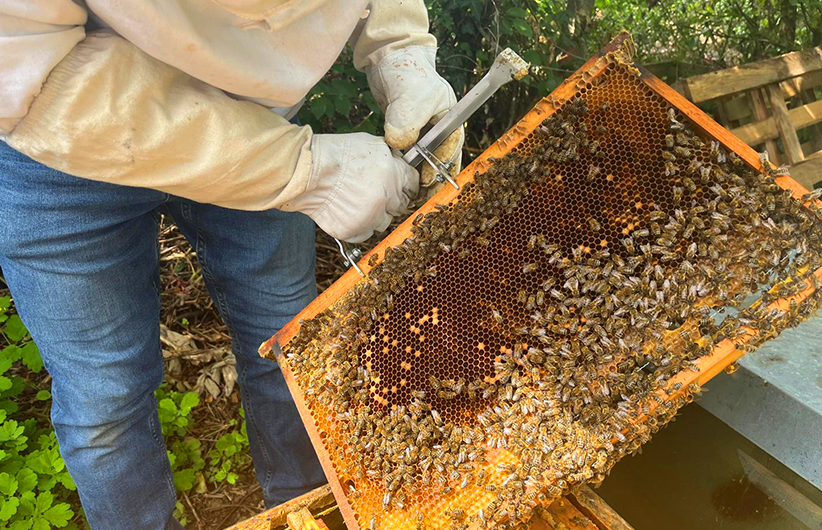
Periodic inspection of hives is vital in beekeeping because it allows early detection of issues that could threaten the health and productivity of the colony.
Regular checks help identify problems such:
- As queen loss
- Diseases
- Parasites (like Varroa mites)
- Food shortages before they become severe
These inspections also allow beekeepers to monitor brood patterns, assess colony strength, manage space, and prevent swarming. Without regular monitoring, a hive can quickly decline without visible warning signs. Periodic inspections ensure that timely actions can be taken to keep the colony strong, healthy, and productive throughout the season.
Swarm control
Swarming reduces honey production and can lead to the loss of part of the apiary. Controlling it ensures strong and stable hives. We prevent and manage the natural division of hives when bees prepare to create a new queen and abandon the original hive.
This is an essential practice in beekeeping because it helps maintain the stability, productivity, and health of hives. When a hive swarms, approximately half of the bees—along with the queen—leave the nest in search of a new location, leaving behind a weakened colony that must raise a new queen and reorganize.
Natural nutrition through honey flora
Locate hives near areas with abundant flowers that produce nectar and pollen, such as lavender, rosemary, sunflowers, clover, almond trees, among others.
Natural nutrition through honey flora
Locate hives near areas with abundant flowers that produce nectar and pollen, such as lavender, rosemary, sunflowers, clover, almond trees, among others.
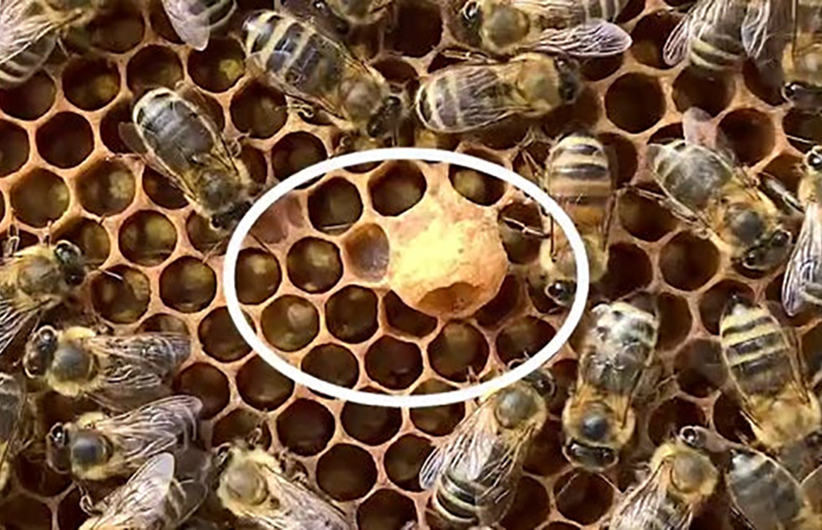
Swarm control is important because swarming—when a colony naturally divides and a large group of bees leaves with the old queen—can significantly weaken the original hive.
This process reduces:
- The colony’s workforce
- Turn lowers honey production
- Bees are vulnerable to disease
- Environmental stress
Additionally, swarms can be lost if they settle in inaccessible or unwanted locations, creating problems for neighbors or the environment. By managing swarm tendencies through regular inspections, space management, and timely interventions, beekeepers can maintain strong, stable colonies, ensure consistent productivity, and reduce the risk of losing valuable bee populations.
Renewal of queens
Periodically replace the queen with a younger one, selected for her good behavior or genetics. Young queens are more productive, lay more eggs, and keep the hive more cohesive, reducing the risk of swarming and improving the health of the group.
Replacing queens in a hive is essential because, over time, their ability to lay eggs decreases, weakening the colony and reducing its productivity. Furthermore, older queens can lose pheromones, which creates disorganization and increases the risk of swarming. By introducing a young, vigorous queen, you ensure consistent laying, a strong population, and a better balance within the hive, which benefits both bee health and honey production.
Artificial or supplemental nutrition
Helps keep the hive strong in winter or during droughts. Stimulates queen laying in spring. Supports the formation of new colonies. Ideal use: Late winter, early spring, or during flower shortages.
Natural nutrition through honey flora
We place hives near areas with abundant flowers that produce nectar and pollen, such as lavender, rosemary, sunflowers, clover, almond trees, and others. This provides a balanced and natural diet and improves the quality of honey and other bee products.
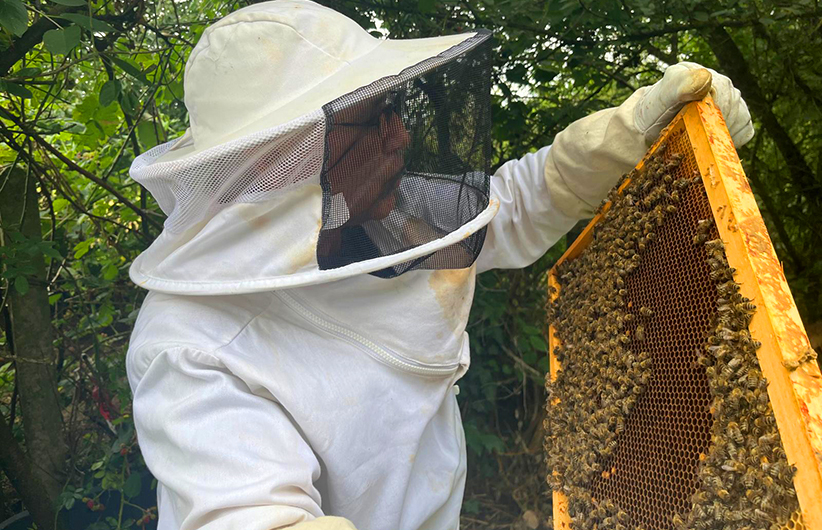
The renewal of queens by the hive—or by the beekeeper—is important because the queen plays a central role in the colony’s health, organization, and productivity. Over time, a queen’s ability to lay eggs declines, and her pheromone levels drop, which can lead to a weaker colony, reduced population, and disorganized behavior.
Replacing older or failing queens with younger brings:
- More vigorous ones ensures
- Stronger egg-laying capacity
- Stable colony dynamics
- Improved resistance to stress and disease
Additionally, controlled queen renewal allows beekeepers to select queens with desirable traits like gentleness, productivity, and disease resistance, strengthening the overall genetic quality of the apiary.
Hygienic handling of beekeeping material
It prevents the spread of diseases such as American foulbrood or nosema. Cleanliness also protects beekeepers and improves product quality. We regularly clean and disinfect frames, supers, tools, and suits.
A poor diet, or the use of contaminated or poorly prepared products, can seriously affect their health, upset the hive’s balance, and contaminate the honey. Supplements should be offered only when necessary and under hygienic conditions to avoid fermentation, bacterial growth, or attracting pests.
Natural nutrition through honey flora
We place hives near areas with abundant flowers that produce nectar and pollen, such as lavender, rosemary, sunflowers, clover, almond trees, and others. This provides a balanced and natural diet and improves the quality of honey and other bee products.
Artificial or supplemental nutrition
Helps keep the hive strong in winter or during droughts. Stimulates queen laying in spring. Supports the formation of new colonies. Ideal use: Late winter, early spring, or during flower shortages.

Proper handling of beekeeping material is essential to maintain the health, hygiene, and productivity of the bee colonies. Tools, hive components, and protective equipment can easily become contaminated with pathogens, parasites, or residues from diseased colonies if not cleaned and sanitized regularly.
Poor handling practices can:
- Spread infections like foulbrood
- Varroa mites
- Nosema across multiple hives
- and many more...
Additionally, well-maintained equipment ensures safe and efficient work for the beekeeper, preventing damage to the hive or harm to the bees. Clean, functional materials also help protect the quality of honey and other bee products, making proper handling a key part of responsible and sustainable apiculture.
Strategic location of the apiary
A good location promotes bee health, improves honey production, and reduces exposure to harmful agrochemicals. We choose sites with good flowering plants, access to water, partial shade, and away from pesticides.
The location of a hive is key to the well-being and productivity of bees, as it directly influences their access to sources of nectar, pollen, and water. A good location should be close to honey-producing flora, protected from strong winds, with good sunlight, and away from polluted areas or areas with intensive pesticide use. Furthermore, a strategic location facilitates management for the beekeeper and reduces the risk of stress, disease, or predator attacks.
Natural nutrition through honey flora
Locate hives near areas with abundant flowers that produce nectar and pollen, such as lavender, rosemary, sunflowers, clover, almond trees, among others.
Artificial or supplemental nutrition
Feed prepared by the beekeeper when there is insufficient bloom. Sugar syrup (water + sugar) → Energy source (nectar substitute). Protein paste → Provides protein (pollen substitute). Homemade honey → In small quantities, if retained from the harvest.
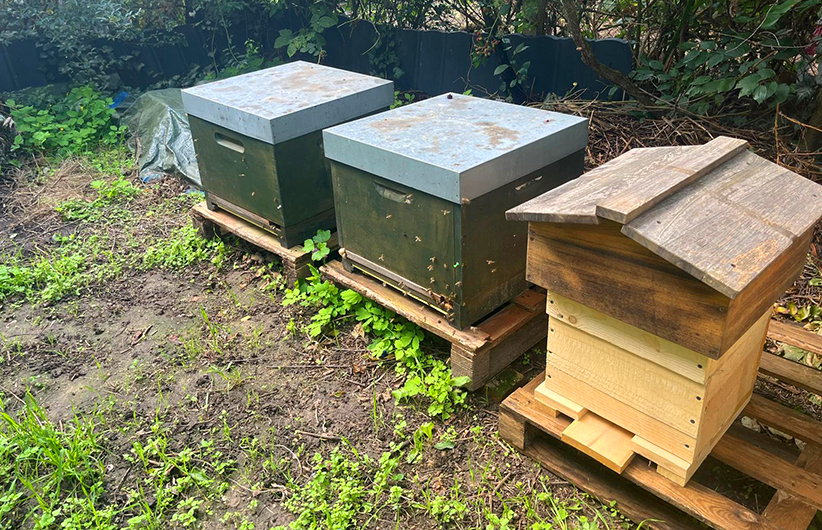
The strategic location of an apiary is crucial because it directly impacts the health, productivity, and safety of the bee colonies. A well-chosen site provides access to abundant and diverse floral resources for nectar and pollen, which are essential for colony nutrition and honey production. It also ensures proximity to clean water sources and protection from harsh weather conditions like strong winds or excessive humidity.
Additionally, placing the apiary:
- Away from areas treated with pesticides
- This reduces the risk of poisoning
- Situating it in a quiet area
- low-traffic area helps minimize stress and disturbance to the bees.
A good location also facilitates easy access for the beekeeper to perform regular inspections and maintenance. Ultimately, a strategic site promotes stronger, healthier colonies and more sustainable beekeeping.
Responsible supplementary feeding
Administramos alimentos preparados cuando no hay suficiente floración. Los más comunes son:
Jarabe de azúcar (agua + azúcar) → Fuente de energía (sustituto del néctar).
Pasta proteica → Aporta proteínas (sustituto del polen).
Miel propia → En pequeñas cantidades, si se retiene de la cosecha.
This helps keep the hive strong in winter or during droughts. It stimulates queen laying in spring and supports the formation of new colonies.
Ideal use: Late winter, early spring, or during flower shortages.
Artificial or supplemental nutrition
Helps keep the hive strong in winter or during droughts. Stimulates queen laying in spring. Supports the formation of new colonies. Ideal use: Late winter, early spring, or during flower shortages.
Natural nutrition through honey flora
We place hives near areas with abundant flowers that produce nectar and pollen, such as lavender, rosemary, sunflowers, clover, almond trees, and others. This provides a balanced and natural diet and improves the quality of honey and other bee products.
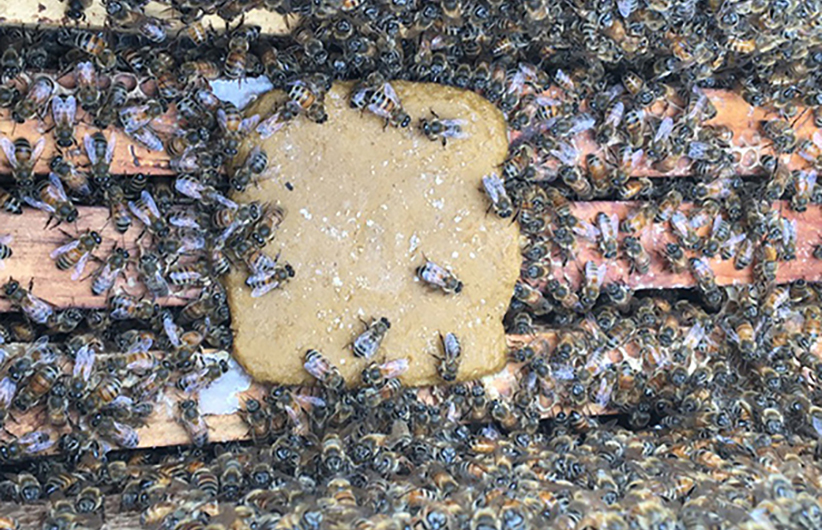
Supplementing bee nutrition is important because it ensures their survival during periods of floral scarcity, such as winter, prolonged drought, or between flowering periods. Although bees normally collect their own food, under certain conditions they fail to accumulate sufficient reserves, which can lead to the weakening or even death of the colony.
We administer prepared foods when flowering is insufficient. The most common are:
- Sugar syrup (water + sugar) → Energy source (nectar substitute).
- Protein paste → Provides protein (pollen substitute).
- Homegrown honey → In small quantities, if retained from the harvest.
- No synthetic additives
Providing energy syrups or protein pastes helps maintain activity within the hive, stimulates queen laying, and ensures that the bees are strong for the next production season.
